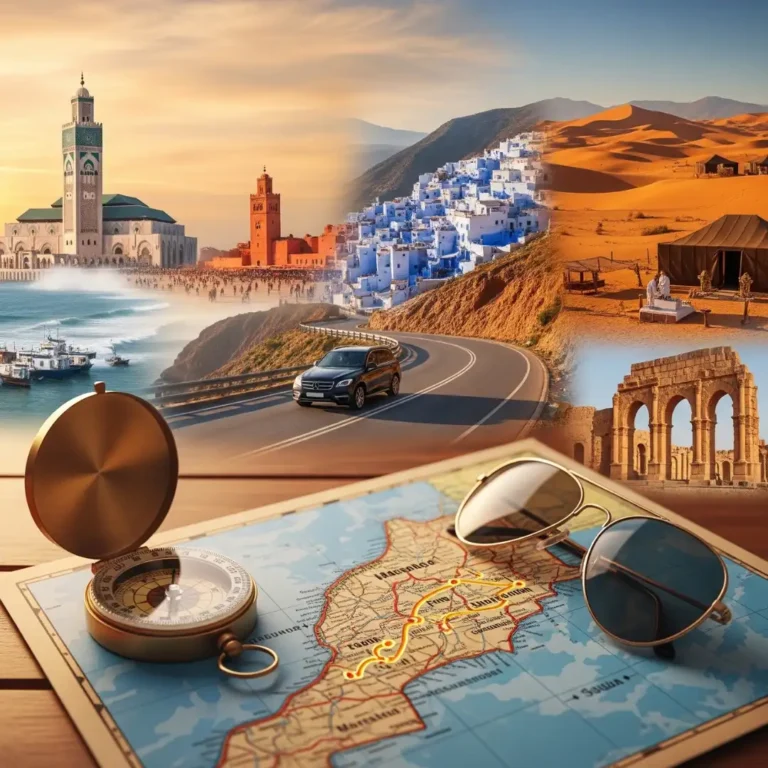Curious? Ask...
Inspire Me...
See Our World
We serve mint tea and hot updates. Subscribe and sip both!
We serve mint tea and hot updates. Subscribe and sip both!
Answer the call of the guembri. This is not a concert; it’s a spiritual journey. Witness a powerful Gnawa lila ceremony led by a revered Ma’lem from Khamlia village. Feel the trance-inducing rhythms of the qraqeb, share a traditional meal, and experience a living cultural heritage under the vast Saharan sky. This is an evening of profound respect and immersive sound, offering a rare connection to Morocco’s soul. Leave the role of tourist behind and become a respectful witness to a centuries-old healing tradition. Come for the music, leave with a vibration that lingers long after the final note fades.
This is not a performance. This is a portal. The hypnotic rhythm of the guembri, the clatter of the qraqeb (iron castanets), and the soulful call-and-response vocals are not meant for entertainment; they are a centuries-old spiritual technology designed to heal, transcend, and connect. Our Gnawa Music Night is an invitation to witness a living tradition, where the Sahara itself becomes the sacred chamber for a ceremony that has crossed oceans and time. We do not just give you a seat; we offer you a place in a circle that seeks to touch the divine.
To witness Gnawa is to understand a story of resilience and spirit. This music is the legacy of the Sub-Saharan African peoples brought to Morocco through ancient trade routes. It is a profound cultural fusion, a prayer in the form of sound.
The Guembri: A three-stringed bass lute carved from a single piece of wood and covered in camel skin. Its deep, resonant pulse is the ceremonial heartbeat, the call that gathers the spirits.
The Qraqeb: Large iron castanets that create a complex, metallic rhythm. Played by the chorus, their constant, shimmering clatter represents the shaking off of earthly burdens.
The Voices: The lead singer, the Maâlem (Master), chants poetic verses invoking saints and spirits, while the chorus responds, creating a powerful, trance-inducing wave of sound.
The Colours of the Spirits: The Gnawa tradition is built on the concept of mluk—spirits, each associated with a colour, element, and rhythm. The ceremony, or lila, is a journey through these colours, using specific rhythms and chants to invite harmony and healing.
We approach this not as promoters, but as humble facilitators of a sacred cultural exchange.
The Setting: The ceremony takes place in an intimate, respectful setting—often on the sands of a private dune or within a riad-like space. The circle is open; you are a guest, not an audience.
The Maâlem: We work exclusively with respected Maâlems from the Gnawa community of Khamlia, the nearby “village of the black people”, ensuring authenticity and that the tradition is honoured by its true custodians.
The Culinary Offering: A traditional dinner is served—a hearty tagine or couscous—shared before the ceremony begins. This breaking of bread together is a fundamental act of community, preparing the space for the shared experience to come.
This experience is for the Cultural Pilgrim, not the casual spectator. It is for travellers seeking a profound, authentic connection to Morocco’s spiritual heartland, for musicologists and soul-searchers, and for anyone who believes that music is more than sound—it is a vessel for history, pain, ecstasy, and healing.
The magic is in the space between the notes:
The moment the rhythm finds its way into your own pulse, and your foot begins to tap of its own accord.
The visible shift in the performers as they move from performance into a state of devotion and trance.
The shared silence that hangs in the air after a powerful chant ends, thick with energy and reverence.
The understanding that you are not just hearing a song, but witnessing a centuries-old prayer for healing and balance.
After a Day of Silence: Following a Silent Desert Hike or a day of meditation, the ceremony offers a powerful, resonant counterpoint—a journey into sound after a journey into silence.
Before a Desert Night: Experience the ceremony before a night at our Standard Berber Camp. The spiritual depth of the music will make the ensuing desert silence feel even more profound.
Respect is Mandatory: This is a spiritual ceremony, not a party. While participation through gentle clapping or movement is welcome, loud conversation or disrespectful behaviour is not tolerated.
The Trance State: You may witness members of the group or even attendees enter a light trance state. Observe quietly and respectfully; this is a natural and desired part of the ceremony.
The Visit Morocco Tours Difference: We ensure the Maâlem and musicians are compensated fairly and with respect, directly supporting the preservation of this UNESCO-recognised cultural heritage.
Logistics: The evening typically lasts 3–4 hours, including dinner. Transportation from your Merzouga accommodation is included.
You will not just remember the music. You will remember the vibration in your chest, the goosebumps on your skin, the feeling of having touched something ancient and true. This experience does not just show you Moroccan culture; it lets you feel its rhythm in your very soul. Come with an open heart, leave humbled and expanded.

From your first step to your last sunset, Morocco is your next unforgettable journey, ready to start?

Visit Morocco Tours
Escape Alchemist
VMT
Tell us your travel drama, we’ve got solutions!